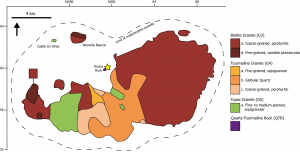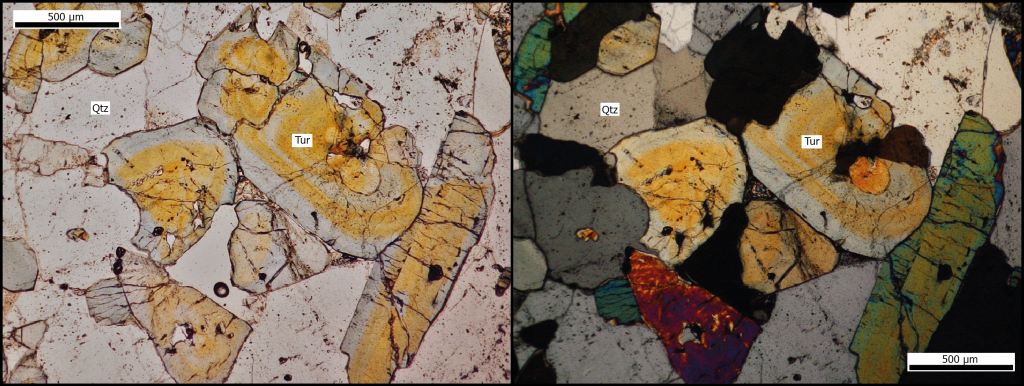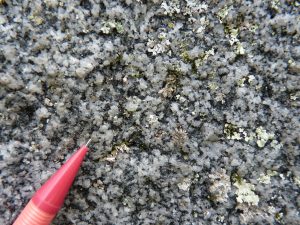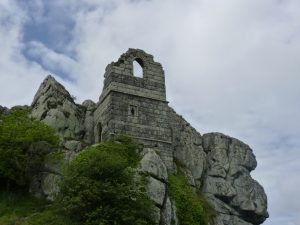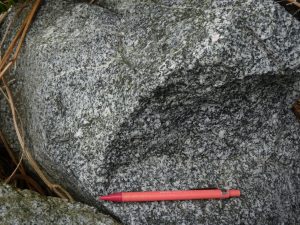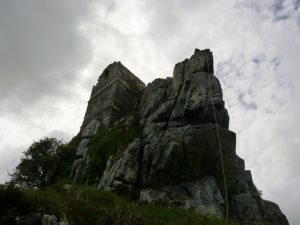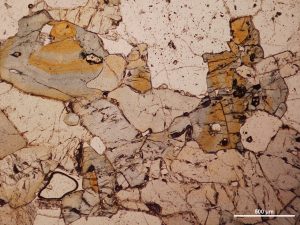Highlights: Quartz Tourmaline Rock, ancient chapel Information here is provided for reference only. You should ensure that you have permission from the landowner and take safety precautions when visiting sites.
Location: SW 9908 5973
What’s nearby: Treviscoe, Wheal Remfry
Conservation: Site of Special Scientific Interest (SSSI), Geological Nature Reserve, Scheduled Ancient Monument. No hammering or collecting at any time.
Gallery
Further Reading & References
- Müller A, Williamson BJ and Smith M. 2005. Origin of quartz cores in tourmaline from Roche Rock, SW England, Minalogical Magazine, 69(4), pp. 381-401. [PDF – £]
- Williamson BJ, Spratt J, Adams JT, Tindle AG and Stanley CJ. 2000. Geochemical constraints from zoned hydrothermal tourmalines on fluid evolution and Sn mineralisation: an example from fault breccias at Roche, SW England, Journal of Petrology, 41(9), PP. 1439-1453. [PDF – £]
